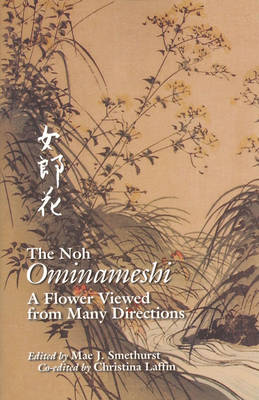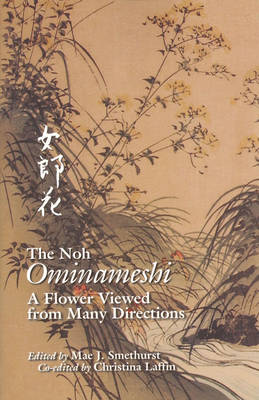
Je cadeautjes zeker op tijd in huis hebben voor de feestdagen? Kom langs in onze winkels en vind het perfecte geschenk!
- Afhalen na 1 uur in een winkel met voorraad
- Gratis thuislevering in België vanaf € 30
- Ruim aanbod met 7 miljoen producten
Je cadeautjes zeker op tijd in huis hebben voor de feestdagen? Kom langs in onze winkels en vind het perfecte geschenk!
- Afhalen na 1 uur in een winkel met voorraad
- Gratis thuislevering in België vanaf € 30
- Ruim aanbod met 7 miljoen producten
Zoeken
€ 52,95
+ 105 punten
Omschrijving
In an important and unique contribution to the study of noh, this volume includes, for the first time, essays on the subject of one noh play written by scholars from both sides of the Pacific Ocean in their own language, Japanese or English (with a summary of each contribution translated into the other language also included). The essays show some of the breadth and depth that is available for the study of Japanese literature and drama both in Japan and abroad. Japanese scholars Amano Fumio, Nishino Haruo, Takemoto Mikio, and Wakita Haruko join with actor Uzawa Hisa and American scholars Monica Bethe, Steven Brown, Susan Klein, William LaFleur, Susan Matisoff, Carolyn Morley, Mae Smethurst, and Arthur Thornhill, to interpret the noh Ominameshi, all from the vantage point of their own analytical approaches. The intent is to provide the reader with more than just an introduction to the variety of ways of studying noh in general by focusing on one particular play and analyzing it closely and from many directions.The volume includes a preface and introduction plus 19 color and 4 black-and-white illustrations; one less literal and one more literal translation of the noh accompanied by the Japanese texts; and contributions interpreting Ominameshi in the light of medieval commentaries, the ai-kyôgen, new historicism, gender studies, legends surrounding the history of the play's setting, the etiology of the graves of the two principal characters, poetic usage, other plays on the subject of ominameshi, the religious background and meaning, authorship, structure, performance, costumes and masks. The volume concludes with reflections on the performance of the play by Uzawa Hisa in Pittsburgh, Pennsylvania, during the conference out of which the book developed.
Specificaties
Betrokkenen
- Uitgeverij:
Inhoud
- Aantal bladzijden:
- 362
- Taal:
- Engels
- Reeks:
Eigenschappen
- Productcode (EAN):
- 9781885445186
- Verschijningsdatum:
- 31/03/2010
- Uitvoering:
- Paperback
- Formaat:
- Trade paperback (VS)
- Afmetingen:
- 218 mm x 127 mm
- Gewicht:
- 498 g

Alleen bij Standaard Boekhandel
+ 105 punten op je klantenkaart van Standaard Boekhandel
Beoordelingen
We publiceren alleen reviews die voldoen aan de voorwaarden voor reviews. Bekijk onze voorwaarden voor reviews.








